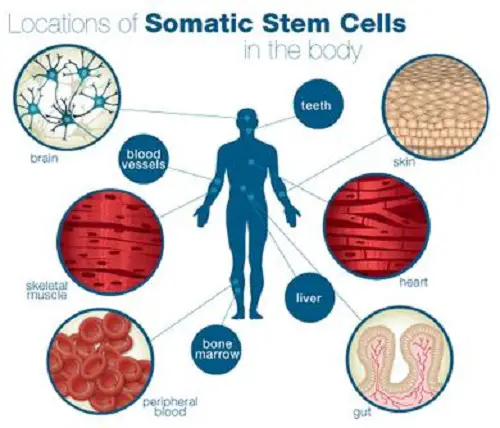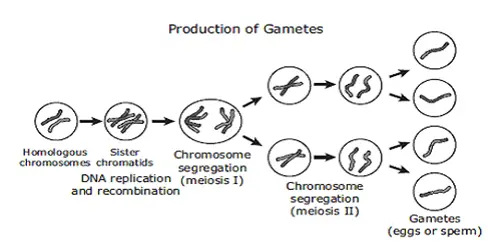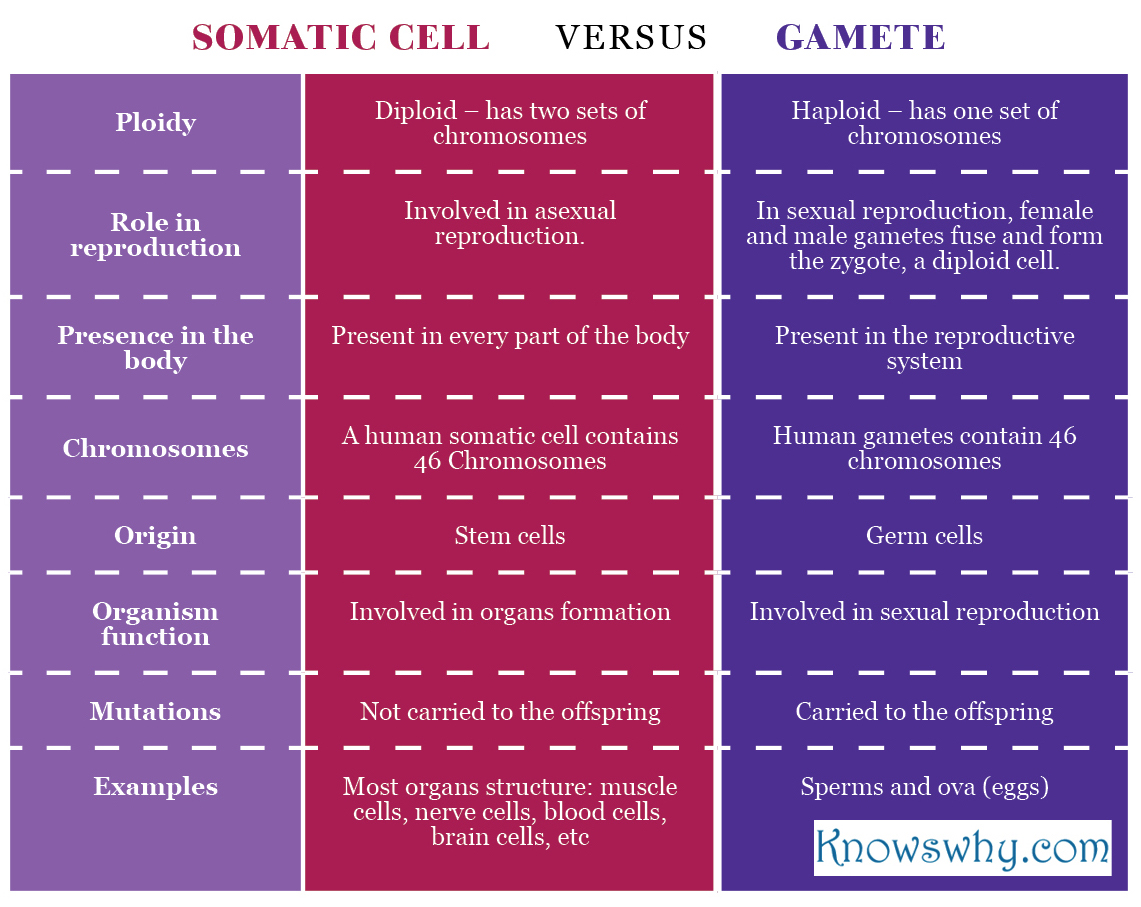
What is a somatic cell?
To allow the formation of new tissues (muscle cells, blood cells, and many others) specific cells are needed to initiate this process. These cells are called somatic cells, and contrarily to what many people think, they aren’t related or involved in sexual reproduction. Although they are present in a different phase of development.
After fertilization (fusion of the egg with the sperm) the zygote will start dividing its cells into identical copies of the original one in a process called mitosis. These cells initially formed are called stem cells. Stem cells are going to start differentiation and create several types of somatic cells, dependent on the differentiation and exposure to their developing environment.
Human beings have about three trillion cells and somatic cells are the responsible for their production. The differentiation of somatic cells can lead to mature cells in the digestive system, cardiovascular system, nervous system, among all others. Mutations can occur on somatic cells during replication, although they won’t pass to further generations.
Somatic cells are formed from a process called mitosis, whereas a cell creates a genuine copy of itself. These cells contain 46 chromosomes attached in sets of 23 pairs. Maternal and paternal chromosomes combine to form the set present on somatic cells, one from the mother and other from the father. On the human body, it is possible to find 200 distinct types of somatic cells.
These structures are only present in asexual reproduction in which these cells produce an identical copy of themselves by mitosis, generation two daughter cells with the exact same characteristics of the mother cell. Some species contain haploid somatic cells (with a single set of chromosomes), that allow the development of alterations in upcoming generations.

What is a gamete?
Human beings and most multicellular eukaryotic species generate offspring via sexual reproduction. This means that to generate new beings there are a particular group of cells called gametes with a specific function.
Gametes, also known as sex cells, are haploid cells (generated by meiosis, these cells only contain a single set of chromosomes), which means that to generate offspring, two parents are needed, each of them contributing with 50% of the total DNA. During sexual reproduction, gametes fuse in a process called fertilization. In this process, each cell (the male and the female) contribute with one set of chromosomes (haploid) to generate a zygote (diploid) which has two sets of chromosomes.
Humans reproduce via sexual reproduction; male gametes are called sperm and female gametes are called ova (or egg). Although the human male produces sex cells during all their life’s, human females are born with a limited number of eggs and won’t produce more during their lifetime.
Germ cells originate gametes; these cells are formed via meiosis, meaning that a diploid cell can produce four haploid cells in the of a process called meiosis II (meiosis produces cells with half chromosomes of the original cell and half of the genetic material). This process of gametes formation is known as gametogenesis. Gametes are only located on the reproductive organs of multicellular eukaryotes in an organ called as gonad (testicles in males and ovaries in females).
During replication, there may happen mutations in gametes: deletion or insertions of nucleotides in DNA chains or chromosomal aberrations. Has they happened in the gametes, these mutations will be carried out to the next generation, resulting in variations in alleles. Natural selection will oversee the selection of the most favorable characteristics.
Difference between Somatic cells and gametes
1. Definition
Somatic cell
Somatic cells are diploid cells with the ability of mature in any cell of the human body (except sex cells).
Gamete
Gametes are the basis of sexual reproduction, they are mature germ cells that fuse together to form a zygote.
2. Function
Somatic cell
Somatic cells can transform in any cells (except sex cells) depending on the environment they are experiencing. They can become cells from any system or tissue.
Gamete
Gametes are essential in sexual reproduction. Gametes from a male and a female (both haploid) fuse and form a zygote (diploid).
3. Location
Somatic cell
Somatic cells are located all over the human body to become mature specific cells
Gamete
Gametes are located on gonads to allow sexual reproduction
4. Formation
Somatic cells
Stem cells allow the formation of somatic cells
Gamete
Germ cells allow the formation of gametes
5. Ploidy
Somatic cell
Somatic cells are diploid
Gamete
Gametes are haploid
6. Type
Somatic cell
Only one type that matures according to the environment
Gamete
There can be found two types of gametes, the female (ova or eggs) and the male (sperm)
7. Chromosomes
Somatic cell
Somatic cells have 46 pairs of chromosomes (diploid)
Gamete
Gametes have 23 pairs of chromosomes each (haploid)
8. Reproduction
Somatic cell
Somatic cells have a role on asexual reproduction
Gamete
Gametes are essential for sexual reproduction, to allow the formation of the zygote (diploid cell) from two cells, the sperm and the egg (both haploid)
8. Mutation
Somatic cell
Mutations don’t pass to the offspring
Gamete
Gametes are essential for sexual reproduction, to allow the formation of the zygote (diploid cell) from two cells, the sperm and the egg (both haploid)
Somatic cell vs Gamete

Summary:
- Gametes are haploid cells, somatic cells are diploid
- Gametes, when combined via sexual reproduction, result in a diploid zygote being the basis of sexual reproduction. Somatic cells don’t have a role on reproduction
- Gametes are found in the gonads (being restrict to reproductive organs), somatic cells are found in most of the body
- Somatic cells are generated via stem cells, gametes came from germ cells
- Somatic cells are produced via mitosis, gametes are formed from meiosis.
- Somatic cells can transform in most cells of the human body, gametes fuse during sexual reproduction to form a new being
- Humana somatic cells contain 46 chromosomes while humane gamete cells contain only 23 chromosomes
- Mutations on gametes are carried to the next generation, mutations on somatic cells aren’t












Leave a Reply